5 Wood Destroying Pests
5 Wood Destroying Pests
1. Termites
Each year, termites cause more than 5 million dollars in property damage in over 600 thousand homes just the United States alone. Termite damage can range from minor cosmetic damage to the home to full structural failure. Along with attacking the home itself, termites can even target other wood-based items. Wood is abundant in a substance called cellulose, which attracts termites. With such a powerful appetite for cellulose termites are also rather keen on wooden furniture, paper, and books. A single termite is rarely something to be worried about as the damage that one lone termite could cause is relatively negligible. However, termites are social creatures that live in extensive colonies that typically consist of roughly 60 thousand termites. The damage these termites can cause is drastic. Furthermore, depending on the specific species of termite and the size of the colony in question, termites can consume wood at a rate of up to 1 pound in just 24 hours. 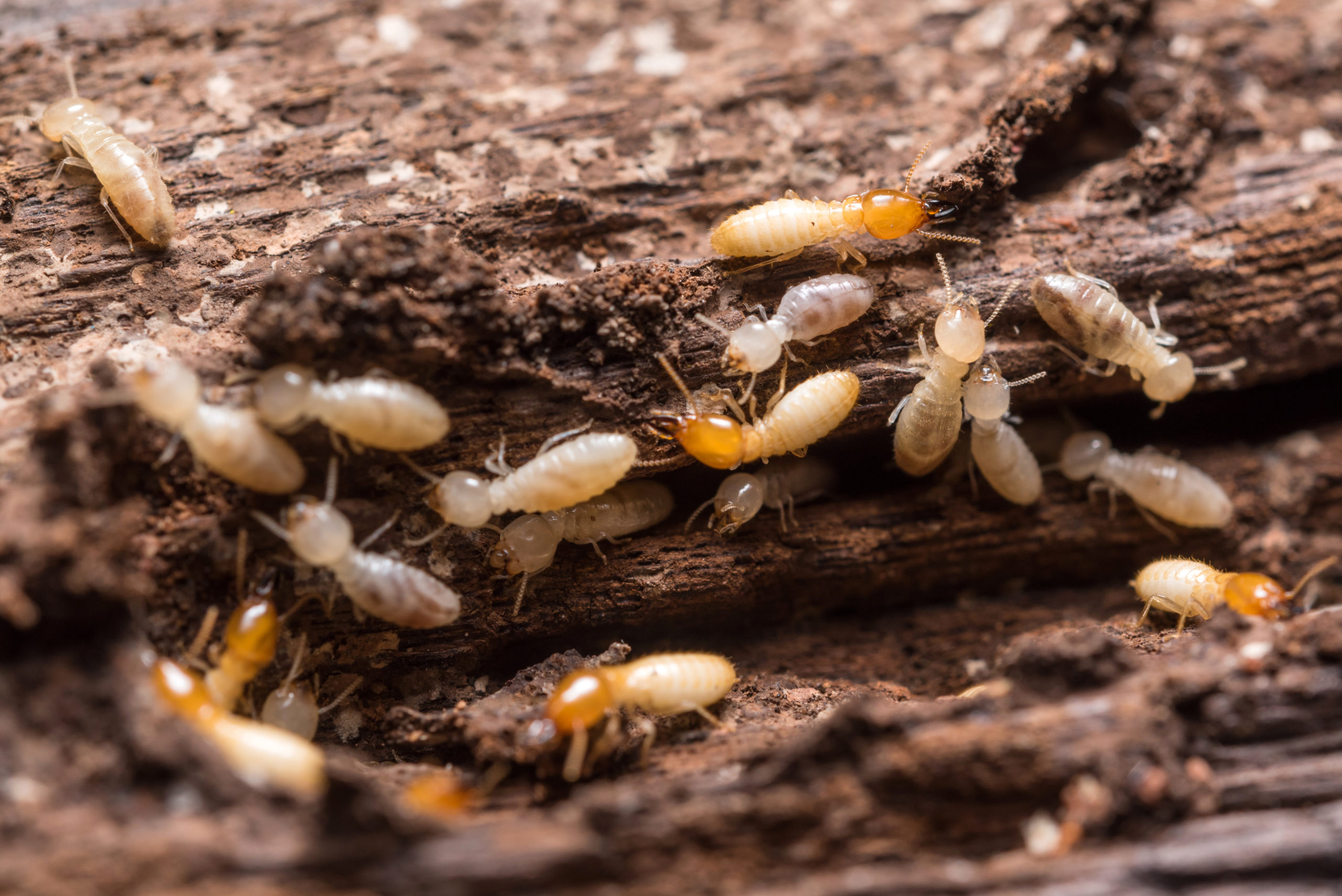
2. Carpenter Ants
Carpenter ants are often confused with termites as the two insects do share a lot of similarities. However, they actually have more differences than similarities. To begin with, they are two different species entirely and are built rather different. Carpenter ants have very narrow waists, geniculate antennae which have a special elbow-like joint, and two sets of wings of which the bottom set are smaller than those nearer to their head and have a tapered appearance becoming wider the further the wings are from the body. Another large difference between the two creatures is their diets. While both are both wood-boring insects, termites actually consume the wood while carpenter ants simply chew the wood in order to build their nests and leave it behind as little piles of sawdust. Instead of dining on wood, these ants will seek out sources of protein and sugar such as dead/live insects, meats, pet foods, jellies/jams, sugar, etc. 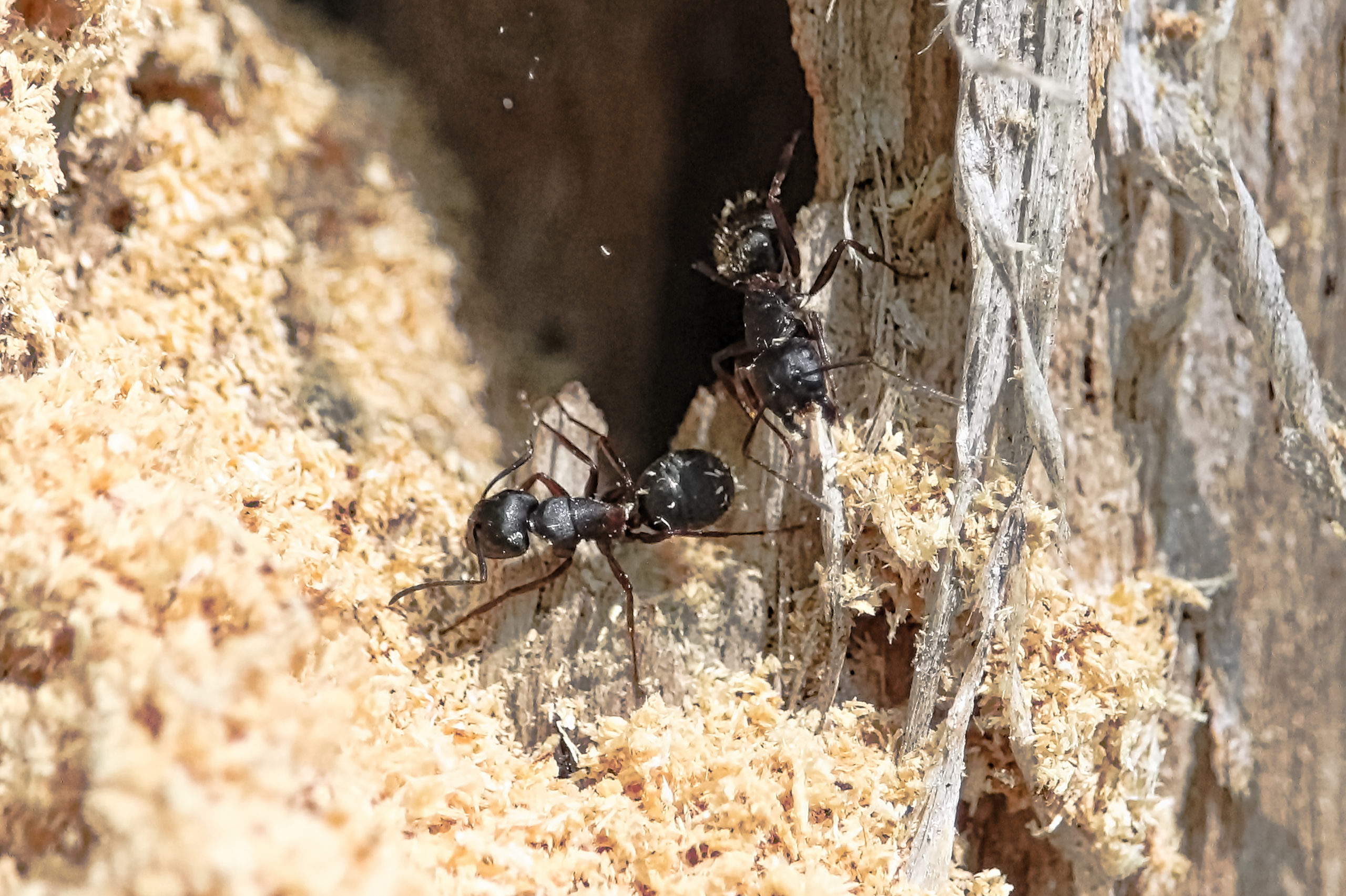
3. Carpenter Bees
Carpenter bees are a bit heftier in size compared to honeybees and are sometimes mistaken for their cousins the bumblebees. In fact, they are the second largest native bees in the United States, just behind bumblebees. However, unlike bumblebees who have fine hairs all over their bodies, the yellow hairs that they sometime have on their thorax are somewhat patchy, while their abdomens seem to lack any fur, and are a shiny black color. They make their nests in wooden structures but, just like carpenter ants, they do not consume the wood and prefer to dine on flower nectar instead. These bees can cause significant structural damage to homes and other wooden structures through the creation of their homes. Mated female bees bore into wooden structures, creating a series of tunnels that act as her home and nesting area. The entry point is typically a hole spanning roughly half an inch in diameter which stretches back several inches before partitioning off into different tunnels and chambers along the wood grain. These different galleries can run from roughly six inches long to even longer than a foot. Bug, while one single bee can only create so much damage, once her offspring has hatched, the brood will spread out ultimately causing extensive damage to the wooden structure. 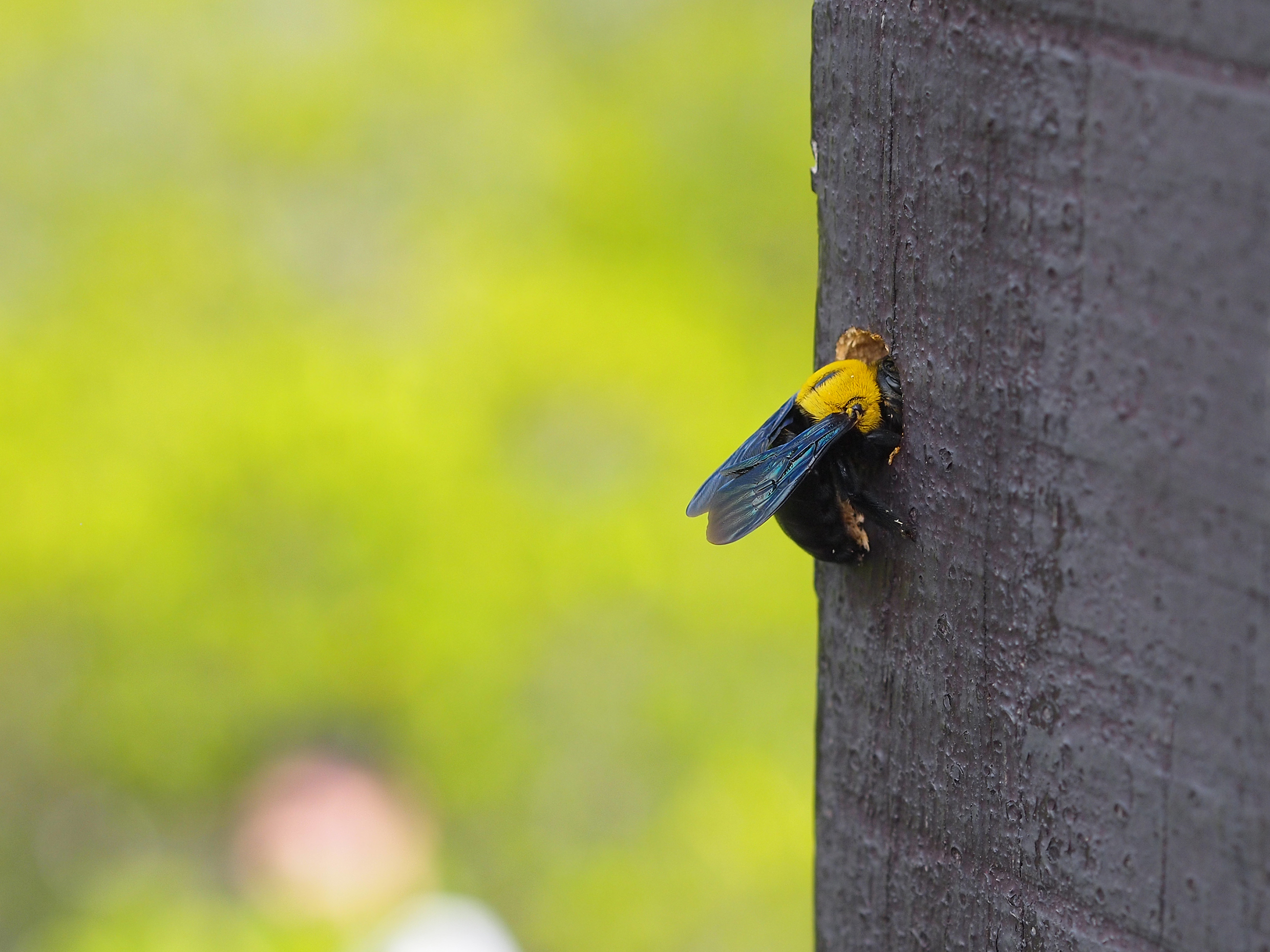
4. Rats
If you have a rat infestation, they can annihilate the integrity of your home, dismantling it from the inside out. These pests have extremely formidable teeth that they rely on to survive. They are constantly gnawing on things and are notorious for their abilities to bore through hard substances such as wood, plastic, and even some metals. According to the Mohs Hardness Scale (a testing system developed by German mineralogist Friedrich Mohs in 1812 that ranks the hardness of materials from a scale of 1, being the softest, to 10, being the hardest) the teeth of both rats and mice rank at a value of 5.5. For a point of reference, diamonds rank at a value of 10, meaning that these rodent’s teeth are over half as hard as diamonds. Furthermore, rat teeth are coated with a special kind of enamel that makes their teeth extra durable. This enamel is made of a crystalized form of the mineral calcium hydroxyapatite embedded in collagen. With these insanely strong teeth, it’s not surprising that they also have a very powerful bite force. When tested, rats displayed an average max biting force of 12 tons per square inch! To put this into perspective, great white sharks can only bite with up to 2 tons per square inch, and alligators can only snap with a force of 1.6 tons. With such insanely powerful teeth and an amazing biting power, rats are one of the most destructive pests you can have in your home. 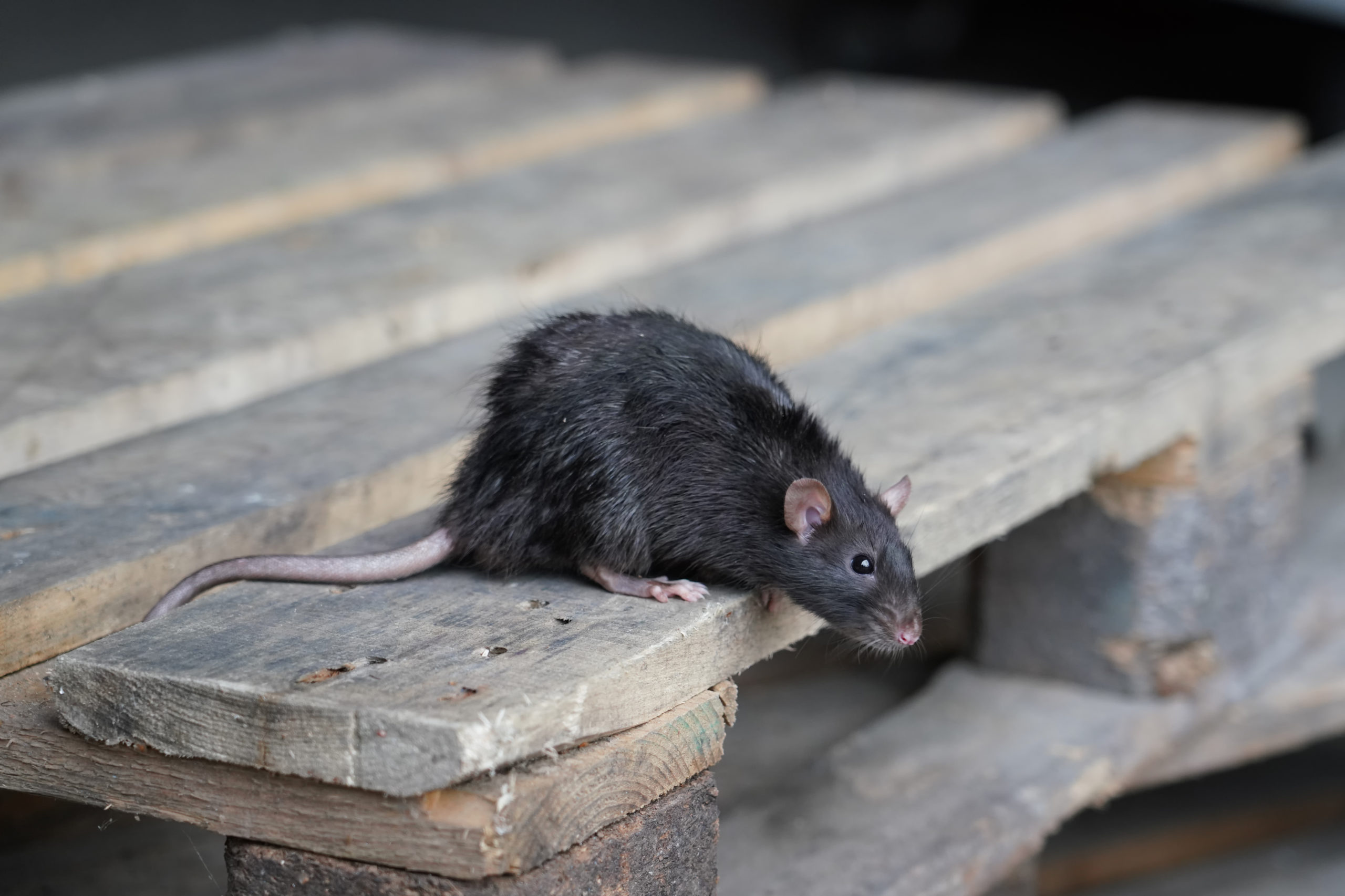
5. Mice
While the bite force of rats is certainly stronger than that of mice, their jaws are still shockingly strong. In an experiment conducted by the American Society of Mammologists and published in a 2008 Issue of the Journal of Mammalogy, scientists used bite force detectors to measure the jaw strength of Peromuuscus leucopus (aka. The White-footed Mouse which is a type of Deer Mouse). Their investigation found that the maximum bite strength of these little creatures was positively correlated with the size of the individual and could also be varied by their stress levels as well. Regardless, just like their rodent cousins the rats, these little pests can create a multitude of damage to wooden structures in and around homes. 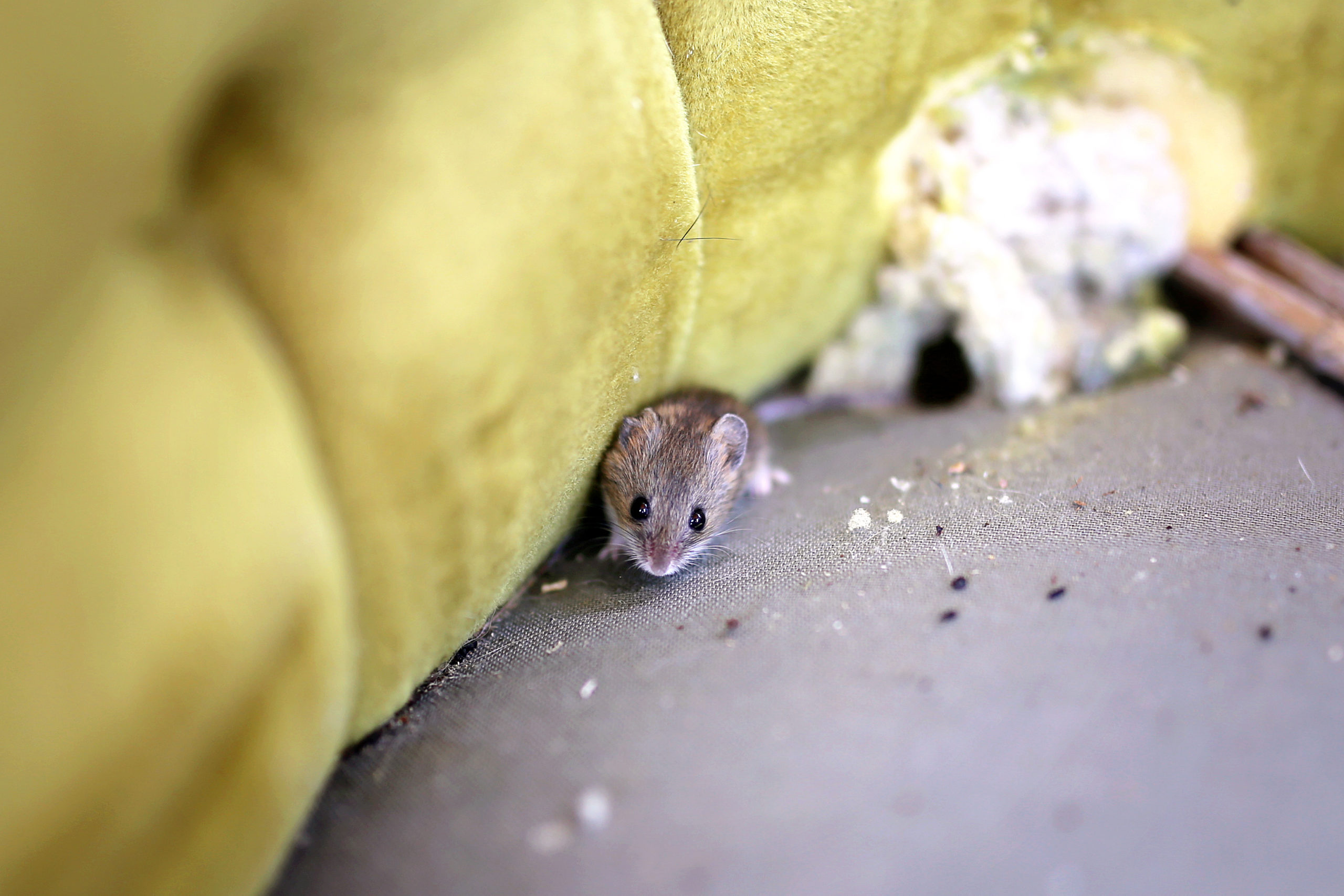
Citations
Buchman, S. (no date) Carpenter Bees (Xylocopa spp.), U.S. Forest Service. The United States Department of Agriculture. Available at: https://www.fs.fed.us/wildflowers/pollinators/pollinator-of-the-month/carpenter_bees.shtml (Accessed: January 26, 2021). Carpenter Bees (2014) University of California Agriculture and Natural Resources. Integrated Pest Management Program. Available at: http://ipm.ucanr.edu/PMG/PESTNOTES/pn7417.html (Accessed: January 26, 2021). Freeman, P. and Lemen, C. (2008) “Measuring Bite Force in Small Mammals with a Piezo-Resistive Sensor,” The Journal of Mammalogy, 89(2), pp. 513–517. Ginot, S., Herrel, A., Claude, J. and Hautier, L. (2019) “Morphometric models for estimating bite force in Mus and Rattus: mandible shape and size perform better than lever-arm ratios,” The Journal of Experimental Biology. doi: 10.1242/jeb.204867. King, H. (no date) Mohs Hardness Scale, Geology.com – Geoscience News and Information. Available at: https://geology.com/minerals/mohs-hardness-scale.shtml (Accessed: February 10, 2021). How Fast do Termites Eat Wood – Avoid Structural Damage (no date) Investment Properties Info. Available at: https://www.investmentpropertiesinfo.com/learn/how-fast-do-termites-eat-wood/ (Accessed: November 2020). How Long Does it Take for Termites to Cause Extensive Damage? (no date) Architecture Art Designs. Available at: https://www.architectureartdesigns.com/long-take-termites-cause-extensive-damage/ (Accessed: November 2020). How Much Damage Can Termites Create? (2017) Mighty Mite. Available at: https://www.mightymitetermite.com/blog/how-much-damage-can-termites-create/ (Accessed: November 2020). Jacobs, S. (2017) Carpenter Bees, Penn State Extension. Pennsylvania State University College of Agricultural Sciences. Available at: https://extension.psu.edu/carpenter-bees (Accessed: January 26, 2021). Waldvogel, M. and Alder, P. (2018) Carpenter Bees, NC State Extension Publications. North Carolina State University Department of Entomology and Plant Pathology. Available at: https://content.ces.ncsu.edu/carpenter-bees (Accessed: January 26, 2021).
Request a Free Quote Today
(We do not share your data with anybody, and only use it for its intended purpose)


